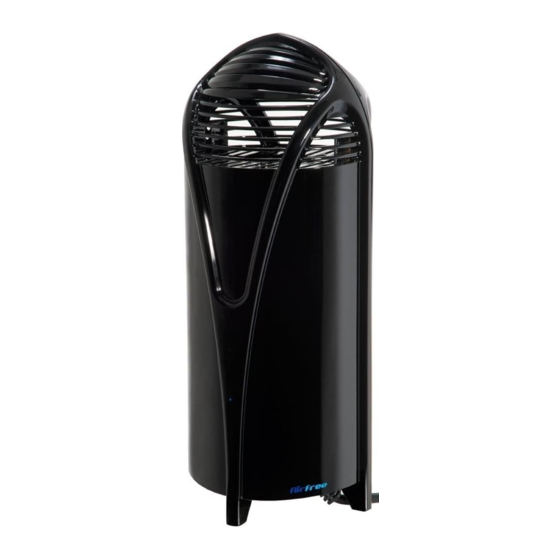Airfree T40 Gebruiksaanwijzing - Pagina 11
Blader online of download pdf Gebruiksaanwijzing voor {categorie_naam} Airfree T40. Airfree T40 13 pagina's.

14. How does Airfree destroy dust mites?
Mould reduction in the environment causes reduction in the mould dependant dust mite population. Airfree
also destroys the harmful toxins and fungus freed by dust mite feces that trigger respiratory allergies.
15. How does Airfree eliminate fungi?
As mentioned before, Airfree eliminates airborne microorganisms included fungi and spores. By eliminating
spores new colonies are unlikely to develop, representing less future airborne spores.
16. How does Airfree destroy viruses?
Those microscopic microorganisms are easily eliminated inside Airfree's ceramic core capillaries. The tem-
perature inside of Aifree's capillaries is much higher than required to destroy them. Airfree is your greatest
ally in respiratory disease prevention.
17. Does Airfree reduce tobacco smell?
Yes, Airfree reduces any kind of organic smell in the ambience including tobacco.
18. Does Airfree release any gas or chemical product?
No. Airfree's sterilisation process is natural. Please check our website for conclusive tests regarding par-
ticles and ozone.
19. Does Airfree heat up a room?
No. Airfree does not noticeable increase room temperature. To have an idea 2 Airfrees plugged in the same
room will contribute as much heat as the presence of one adult in that same room.
20. Does Airfree provoke any change in room's the relative humidity?
No.
21. Does Airfree need filter replacement?
No.
22. Does Airfree consume a lot of energy?
No. Airfree's consumption is just 30 Watts for T30 and 33 Watts for T40.
23 - Where do the microorganisms go after they are destroyed?
As all living organisms, microorganisms and their products are basically composed by carbon, oxigen and
nitrogen. Since Airfree reachs nearly 200°C, all the components are supposed to suffer a combustion pro-
cess, which liberates carbone dioxide (the same product released by our respiration) and water. Some
carbon (or ashes) may remain in the process. If there is some residual allergen left, we might consider that
they suffer denaturation, a process involving lost of conformation and function.
It should be noted that we are talking about reactions that occur in a microscopic level, so all these pro-
cesses or by-products won't be perceived. In this case, there is no need to worry about maintenance.
11
E
n
g
l
i
s
h
